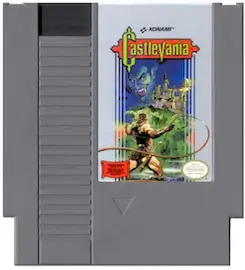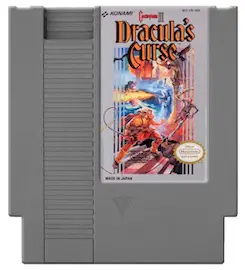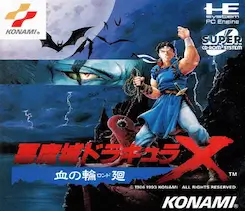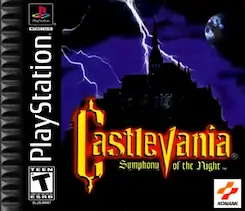Few video game series can claim they defined an entire genre. But Castlevania did just that—giving birth to the iconic Metroidvania style of gameplay, blending nonlinear exploration with tense, gothic action.
From its pixelated roots on the NES to the groundbreaking RPG mechanics in later entries, the Castlevania franchise has consistently pushed boundaries. While not every game in the series hits the mark, the vast majority are considered retro gaming masterpieces that have inspired generations of developers and gamers alike.
The Table of Contents
The Best Castlevania Games – Ranked Retro Classics You Need to Play
Whether you’re new to the series or a longtime vampire slayer, this list ranks the top 10 retro Castlevania games that every fan must experience. Get ready to relive whip-cracking combat, eerie castles, and the eternal battle between the Belmont clan and Dracula himself.
1. Castlevania (NES, 1986)
The original Castlevania on NES laid the blueprint for one of the most beloved action-platformers of all time. You play as Simon Belmont, armed with your whip, a few sub-weapons, and nothing but raw skill. No leveling up. No inventory systems. Just pure, side-scrolling monster-slaying.
with your whip, a few sub-weapons, and nothing but raw skill. No leveling up. No inventory systems. Just pure, side-scrolling monster-slaying.
With tight controls, classic 8-bit horror aesthetics, and a famously tough difficulty curve, this game established the franchise's dark identity and relentless gameplay challenge. It also introduced the world to the “Vampire Killer” theme—one of gaming’s most iconic musical scores.
If you’re collecting NES cartridges or looking to test your retro reflexes, this is an essential piece of video game history. For more tips on authenticity, visit our guide: How to Spot Fake NES and N64 Games.
2. Castlevania III: Dracula’s Curse (NES, 1989)
With branching paths, multiple characters, and different endings, Dracula’s Curse brought choice and strategy to 8-bit action. You control Trevor Belmont, Simon’s ancestor, and can recruit up to three companions—each with their own playstyle and narrative path.
and narrative path.
This ambitious NES title adds a level of replayability and depth rarely seen on the console. Whether you partner with Sypha’s magic, Grant’s agility, or Alucard’s transformations, your decisions shape your journey through Dracula’s sprawling castle.
Tough, rewarding, and packed with innovation, it’s no surprise that this is often ranked among the best NES games ever. Looking to grab a complete-in-box version? Check out our 2025 Price Guide for NES Game Values.
3. Castlevania: Bloodlines (Genesis, 1994)
Exclusive to the Sega Genesis, Bloodlines stands out for its gritty presentation, powerful soundtrack, and dual protagonists. Choose between John Morris and Eric Lecarde, each offering a unique weapon and approach to the action.
Breaking from tradition, this title expands the battlefield beyond Dracula’s castle to real-world locations across Europe. It also flaunts impressive sprite work and layered effects that pushed the Genesis to its technical limits.
For fans of the Sega library, this is a must-play. And if you’re selling your Genesis collection, be sure to read our Video Game Console Selling Guide – Cash In On Your Retro Systems.
4. Castlevania: Rondo of Blood (TurboGrafx-CD, 1993)

Long considered a hidden gem, Rondo of Blood features tight gameplay, sharp visuals, and an incredible soundtrack. With multiple characters and branching paths, it rewards exploration and replayability. This title set the stage for what would come next—Symphony of the Night.
5. Super Castlevania IV (SNES, 1991)
A reimagining of the original NES title, Super Castlevania IV added fluid whip mechanics, haunting Mode 7 effects, and a grand soundtrack that remains iconic. This SNES gem is as atmospheric as it is playable, and it’s often a favorite for collectors and retro fans alike.
6. Castlevania: Symphony of the Night (PlayStation, 1997)
Often considered the best Castlevania game ever made, Symphony of the Night combined RPG elements with Metroid-style exploration. You play as Alucard, Dracula’s son, navigating an inverted castle filled with secrets, spells, and loot. This PlayStation classic still holds up beautifully in 2025.
Alucard, Dracula’s son, navigating an inverted castle filled with secrets, spells, and loot. This PlayStation classic still holds up beautifully in 2025.
7–10: GBA and DS Castlevania Highlights
-
7. Castlevania: Circle of the Moon (GBA, 2001) – Dark, challenging, and full of secrets. One of the best early GBA titles.
-
8. Castlevania: Harmony of Dissonance (GBA, 2002) – Brighter visuals and simplified combat, but divisive among fans.
-
9. Castlevania: Aria of Sorrow (GBA, 2003) – A soul-absorbing mechanic, set in the future, that became a franchise favorite.
-
10. Castlevania: Order of Ecclesia (DS, 2008) – A refined, challenging entry with sidequests and innovation galore.
- For more fan rankings and alternate perspectives, check out the Ranking of Castlevania playlist by morecowbell24 on IGN (published May 13, 2022).
- Looking for platform-specific opinions? Check out Best Castlevania Games, Ranked – Switch and Nintendo Consoles from Nintendo Life for a modern look at the franchise’s Nintendo releases.
Relive the Castlevania Legacy – Or Cash In Your Collection
Want to relive these classic vampire-hunting adventures or cash in on your collection? Sell your retro games with The Old School Game Vault, or for similar reads, check out our Best Retro Horror Games guide.
Frequently Asked Questions
What Castlevania games are on the NES?
- The original Castlevania trilogy released on the NES includes:
- Castlevania, Castlevania II: Simon's Quest, and Castlevania III: Dracula's Curse.
When did Castlevania 1 come out on NES?
- The first Castlevania game was released in North America on May 1, 1987 for the Nintendo Entertainment System (NES).
Who is the strongest Belmont?
- Julius Belmont from Castlevania: Harmony of Dissonance is often considered the strongest Belmont, as he defeated Dracula in the year 1999.
Which Castlevania game is the best?
- Many fans and critics regard Castlevania: Symphony of the Night as the best game in the series due to its open-ended exploration, RPG elements, and lasting influence on the Metroidvania genre.
What Castlevania games are on Nintendo Switch?
- The Nintendo Switch offers several Castlevania games, including the Castlevania Anniversary Collection, Castlevania Advance Collection, and Dead Cells: Return to Castlevania DLC.
Which is the worst Castlevania game?
- Castlevania Judgment for the Nintendo Wii is often considered the weakest in the series due to its awkward 3D fighting mechanics and departure from the franchise's traditional style.



